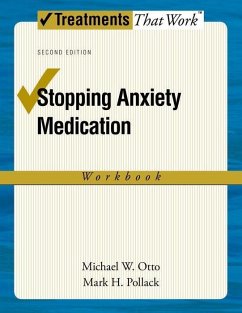
Stopping the Violence
A Group Model to Change Men's Abusive Attitudes and Behaviors
Versandkostenfrei!
Versandfertig in 1-2 Wochen
141,99 €
inkl. MwSt.
Weitere Ausgaben:

PAYBACK Punkte
71 °P sammeln!
Stopping the Violence: A Group Model to Change Men's Abusive Attitudes and Behaviors helps practitioners reduce the negative atmosphere in a batterers' group for men while adapting to clients' individual needs, abilities, and levels of motivation. Useful in any type of patient setting, this comprehensive, hands-on guide provides you with a complete, step-by-step model for a batterer program that includes all of the forms, handouts, tools, and assignments necessary for the treatment process. Pro-feminist, cognitive, and behavioral in its orientation, this program works to eliminate the mindset ...
Stopping the Violence: A Group Model to Change Men's Abusive Attitudes and Behaviors helps practitioners reduce the negative atmosphere in a batterers' group for men while adapting to clients' individual needs, abilities, and levels of motivation. Useful in any type of patient setting, this comprehensive, hands-on guide provides you with a complete, step-by-step model for a batterer program that includes all of the forms, handouts, tools, and assignments necessary for the treatment process. Pro-feminist, cognitive, and behavioral in its orientation, this program works to eliminate the mindset that dominates, controls, and leads to the battering of women.













